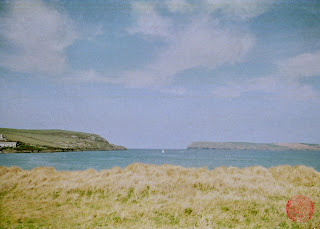The legend of The Mermaid of Padstow has it that, having been accidentally shot with a crossbow by a local man who was out hunting seals, a mermaid used her dying breath to place a curse upon the town. A storm raged for three days and nights, and when the townspeople awoke on the fourth day an enormous sand bar lay stretched across the mouth of the Camel Estuary, preventing ships from entering or leaving the harbour.
Over the course of the past 500 years the golden sands of the Doom Bar and the headlands and reefs on either side have seen the demise of over 300 ships. Whilst you'd be forgiven for presuming that the treacherous nature of the mouth of the Camel Estuary gave rise to the name "Doom" Bar, it is actually derived from a corruption of the word "Dun", or dune, meaning sand.
You see, there are few safe refuges for ships along the 75 miles or so of the North Cornish Coast between St Ives and Bideford, the majority of the coastline being high granite cliffs fronted by narrow beaches regularly pounded by the North Atlantic, and in a storm Padstow often appeared to mariners in distress as somewhat of a false friend. With a shallow sand bar stretching across the mouth of the estuary and the large headlands of Stepper Point and Pentire Point both hemming in approaching vessels and providing shelter from the wind, many captains and their crews had to swim for, or lost, their lives having run aground.
These days the navigable channel to Padstow, which is dredged and maintained by the Harbour Commission, lies on the eastern side of the Estuary (the right hand side in the image above) however through much of the Eighteen hundreds it lay to the west, with the Doom Bar sitting on the Daymer Bay side. This caused such difficulties to approaching vessels that a part of Stepper Point was quarried away (visible in the photograph) to allow ships to fill their sails and make a good run at the 220 metre wide channel. There are still rusting capstans on the ledge under Stepper Point that were once used to winch ships alongside and in to safety after the pilot gigs had rowed out to offer them a line..
Such a lot of stories for such a small patch of water, encircled by the sea, sand and slate. On a calm summers day when walking the low tide beaches on either side of the estuary it's hard to imagine that such a huge number of ship's skeletons lie buried beneath your feet.







